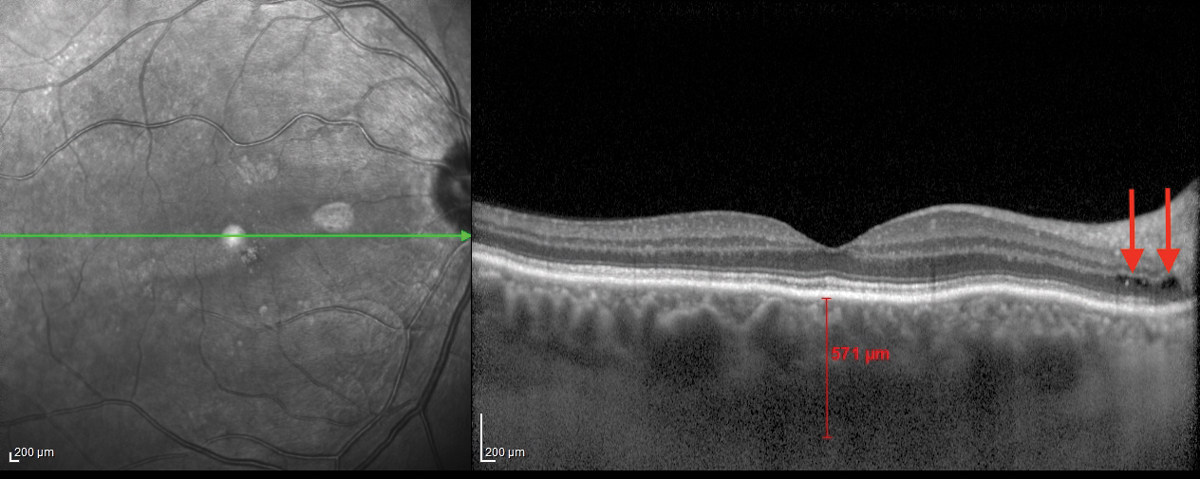 |
| The coronavirus may cause some affected patients to have non-statistically significant retinal thickening and choroidal changes. Photo: Jim Williamson, OD, Meagan Williams, OD. Click image to enlarge. |
A recent study evaluating retinal and choroidal changes in the macular region of patients with COVID-19 demonstrated no significant change in retinal thickness in the different retinal layers of these patients; however, noticeable qualitative changes, such as hyperreflective lesions in different retinal layers, were observed.
Patients recovered from COVID-19, which was confirmed using the reverse transcription-polymerase chain reaction technique, were included in this cross-sectional, observational case-control study. The participants had a mild to moderate degree of disease with no history of hospitalization, steroid usage or blood saturation below 92%.
The researchers performed macular SD-OCT at least two weeks and up to one month after recovery from systemic COVID-19. They evaluated quantitative and qualitative changes detected by imaging and compared their findings with those of age-matched healthy controls.
The study included 30 patients (60 eyes) and 60 controls (120 eyes). The researchers reported that 28.3% of eyes in the patient group showed at least one abnormal finding indicated by macular SD-OCT. This included hyperreflective lesions in different retinal layers. Dilated choroidal vessels and retinal pigment epitheliopathy were observed in 68.3% and 6.7% of eyes in the patient group, respectively.
The data revealed no statistically significant differences in retinal layers or retinal volume between COVID-19-recovered patients and healthy controls. Additionally, the researchers determined that subfoveal choroidal thickness was significantly thicker among patients vs. controls.
“The results of this study showed that patients with COVID-19 developed non-statistically significant thickening in retinal layers, which can demonstrate choroidal changes similar to those in patients with the pachychoroid spectrum,” the study authors concluded. “It was also found that in COVID-19 patients, hyperreflective lesions are present in all retinal layers, and the findings of the current study indicate that the retina and choroid could be involved in patients with COVID-19. These findings highlight the necessity of comprehensive ophthalmic examinations in these patients.”
Abrishami M, Daneshvar R, Emamverdian Z, et al. Spectral-domain optical coherence tomography assessment of retinal and choroidal changes in patients with coronavirus disease 2019: a case-control study. J Ophthal Inflamm Infect. June 18, 2022. [Epub ahead of print]. |

